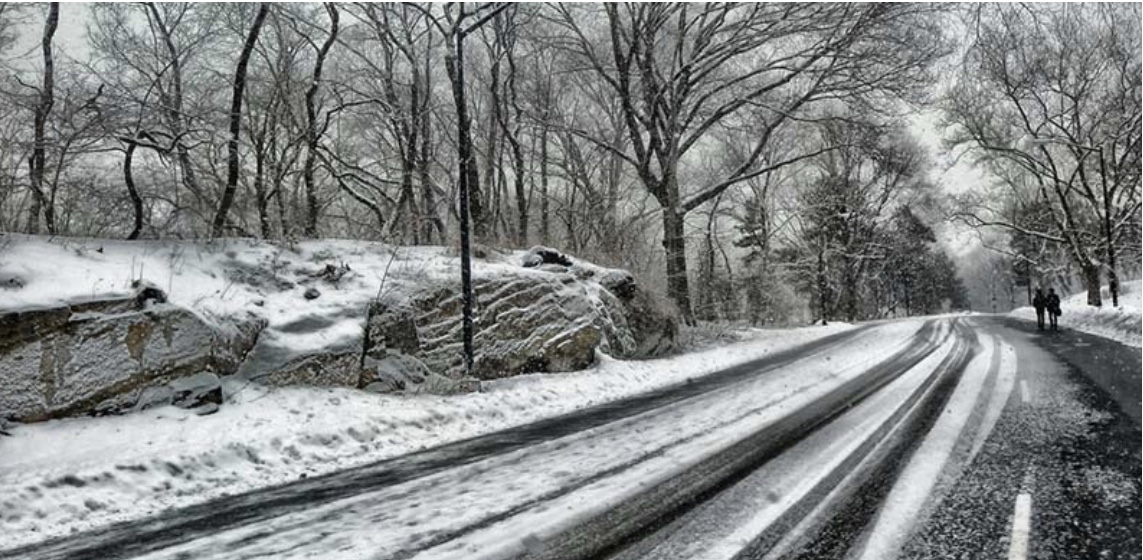
3 March 2018
How To Safely Walk On Ice
With more snow forecast this week, you're likely to encounter a bit of ice. As well as meaning the weather is going to be on the chilly side, ice also poses an issue when it comes to walking for yourself, staff and members of the public.
All it takes is for you to step incorrectly onto an icy patch and you can fall over. While the odd stumble may not seems of like a big deal, falling in the wrong way or when you are holding shopping, for example, can lead to serious injury. However, walking correctly on icy surfaces can help minimise your risk of falling, which also means reducing the chance of injury while you're out and about. So what is the right way to walk on ice? Here is the best way to handle icy floors this winter and get where you're going: Check for ice First thing's first, you should be aware of the possibility of ice before you even leave your house. This can mean looking out of your window or testing the ground as you head outside. While you won't necessarily see all icy patches, checking what the weather is like will, at least, mean you are prepared to encounter ice while out and about. Don’t pug your hands in pockets It might be tempting to bury your hands in your pockets to keep them out of the cold, but this places you at a disadvantage when walking on ice. Not only does this mean you won't be able to break your fall if you slip, which could lead to worse injury, it also affects your balance. Ice covered road You should extend your arms to the side to increase your gravity centre and help you maintain your balance. If you are carrying bags, try to evenly distribute the weight between your hands, and hoist the bags as high on your arms as possible. Spread your feet As well as extending your arms, you should spread your feet out slightly - think of how penguins walk - as this will also increase your centre of gravity and mean each step is more stable. Take slow, small strides without lifting your feet too high. You may feel that you look silly waddling along like a penguin, but it will reduce the likelihood of falling over. Lean forward You should keep your centre of gravity over one leg at all times to ensure you are stable while walking on ice. Usually, when we walk, our weight gets split between both our legs mid-stride, which could be a recipe for disaster on ice. A typical frosty morning To better control your weight, lean forward slightly as you step forward. This will better control your weight distribution and help stop you slipping. If you fall If you do happen to fall, you should make sure you do so in a way that minimises your chances of being injured. If you fall forwards, use your hands to break your fall. If you fall backwards, ensure you tuck your chin in to stop your head from hitting the floor. You should also try to relax as you fall, as this means you will hurt yourself less than if your muscles are tense. The right equipment There are also things you can use to help you walk on ice or to cushion you if you happen to fall. Bulky coats aren't just good for keeping you warm during winter, the extra layers also add cushioning. This means that should you fall over, the impact will hurt less at the time and could help stop you from ending up with bruises or more serious injuries. Frosty paths You can also add ice grips to your shoes, which are great for thick ice or compressed snow. The grips have cleats at the bottom, which provide extra grip and further reduce your chances of slipping. They can be put on over any pair of shoes, although you should remember to remove them when inside to avoid damage to your floors. If you are expecting a particularly icey few weeks it might be worthwhile to look into personal accident insurance in case the unfortunate does happen. Related Article - Preparing for winter Ascend Broking Group 01245 449060 article provided by AIGRecent Posts
Ascend Broking
ASCEND BROKING GROUP LAUNCHES ASCEND RISK
Ascend Broking





